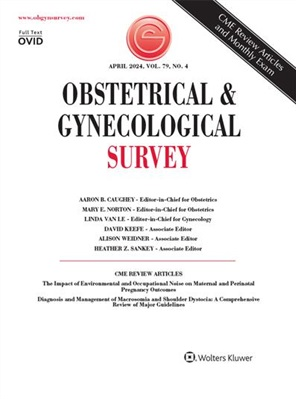怀孕期间使用尼古丁:戒烟和治疗策略
IF 3.6
4区 医学
Q1 OBSTETRICS & GYNECOLOGY
引用次数: 0
摘要
怀孕期间使用烟草和尼古丁产品会增加胎儿不良反应的风险。教育和研究的增加导致怀孕期间戒烟率上升,从2006年的13.2%下降到2016年的7.2%。然而,怀孕期间吸烟仍然是一个普遍存在的问题,它与许多不良后果有关,包括低出生体重、早产和发育迟缓。在怀孕前或怀孕期间戒烟可以帮助减轻这些影响,但适当的治疗方法可能很难确定。因此,临床医生应该寻求提供个性化的护理,包括行为咨询和药物治疗,并结合持续的支持和教育。目标受众:妇产科医生、家庭医生。学习目标完成本活动后,学习者应能更好地识别怀孕期间吸烟的病理生理影响和不同形式的尼古丁使用;描述母亲吸烟的风险及其对新生儿和儿童的影响;并解释怀孕期间戒烟的潜在筛查和治疗策略。本文章由计算机程序翻译,如有差异,请以英文原文为准。
Nicotine Use During Pregnancy: Cessation and Treatment Strategies
ABSTRACT The use of tobacco and nicotine products during pregnancy is known to increase the risk of adverse effects on the fetus. Increased education and research have resulted in greater rates of smoking cessation during pregnancy, with a decline from 13.2% of pregnant individuals smoking in 2006 to 7.2% in 2016. However, smoking while pregnant still proves to be a prevalent issue that is associated with numerous adverse outcomes, including low birth weight, preterm birth, and developmental delays. Smoking cessation before or during pregnancy can help mitigate these effects, but the appropriate treatment can be challenging to ascertain. Accordingly, clinicians should look to provide individualized care composed of behavioral counseling in conjunction with pharmacotherapies when indicated, combined with ongoing support and education. Target Audience Obstetricians and gynecologists, family physicians. Learning Objectives After completing this activity, the learner should be better able to identify the pathophysiologic effects of smoking during pregnancy and the different forms of nicotine use; describe the maternal risk of smoking, along with its neonatal and childhood effects; and explain the potential screening and treatment strategies for smoking cessation during pregnancy.
求助全文
通过发布文献求助,成功后即可免费获取论文全文。
去求助
来源期刊
CiteScore
2.70
自引率
3.20%
发文量
245
审稿时长
>12 weeks
期刊介绍:
Each monthly issue of Obstetrical & Gynecological Survey presents summaries of the most timely and clinically relevant research being published worldwide. These concise, easy-to-read summaries provide expert insight into how to apply the latest research to patient care. The accompanying editorial commentary puts the studies into perspective and supplies authoritative guidance. The result is a valuable, time-saving resource for busy clinicians.

 求助内容:
求助内容: 应助结果提醒方式:
应助结果提醒方式:


